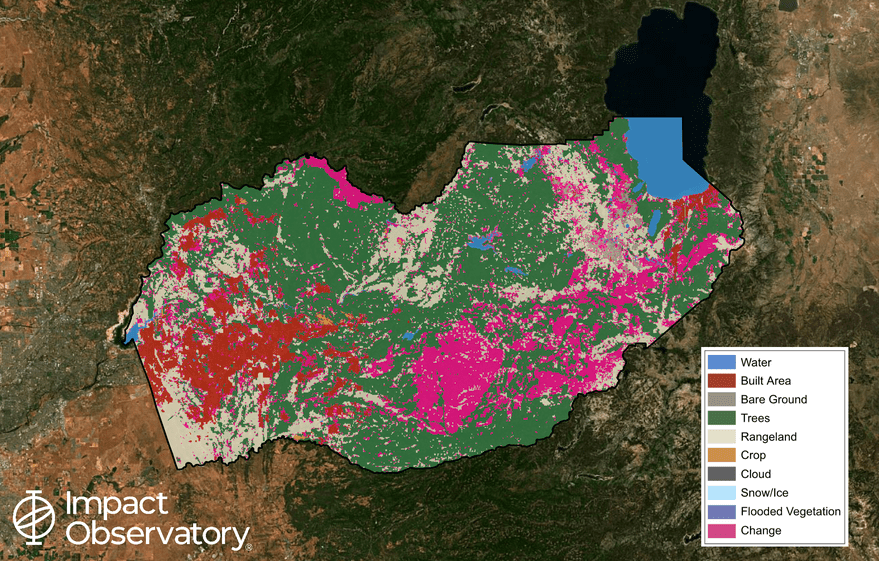
ST. LOUIS — Impact Observatory unveiled an early access program May 22 for IO Monitor, a global mapping and monitoring product.
For $1 per square kilometer customers can obtain access to IO Monitor, which pairs artificial intelligence with satellite imagery to classify land use and land cover. The minimum order size is 5 square kilometers.
The low price will encourage people to start monitoring their hometowns, neighborhoods or farms as well as a nature preserve or recreational area they plan to visit, Steve Brumby, Impact Observatory CEO and co-founder, told SpaceNews by email.
“Impact Observatory is excited to bring AI analysis and automation to help our users understand our changing world at unprecedented speed and scale,” Brumby said. “Our maps of change help users answer quantitative questions about the status and trends of lands they care about. How much new urban expansion has happened near my town? How much forest has been lost to wildfires in the watershed serving my farm or forest?”
Online Orders
Customers can subscribe to the IO Monitor through an online store.
“This fundamentally changes how quickly and easily people can understand the world and the threats and opportunities revealed by satellites observing the world every day,” Brumby said. “This early access program will allow our team to optimize our order, payment and delivery processes, and enable users to provide feedback on our maps and what they would like to monitor next. We expect to roll out a series of improvements to the store and to our maps over the coming months.”
The current maximum size for online orders is 15,000 square kilometers. Orders larger than that are handled by the Impact Observatory sales staff.
In addition to its online store, Impact Observatory will offer access to the IO Monitor through Esri, Microsoft Azure and Amazon Web Services, Brumby said.
Customer Feedback
The IO Monitor early access program will last for a few months as the company seeks customer feedback.
“Landowners and decision makers in governments and industry have been used to trying to make decisions with maps that might be years old, so the first learning opportunity for us is to see what types of changes people are most interested in now that they can have a ‘living’ map of their world,” Brumby said. “Over time, we’re going to expand the number of land use and land cover categories, and options for higher-resolution maps using commercial satellite imagery that will enable our users to understand the world in new ways.”
Ten-meter resolution data from the European Space Agency Copernicus constellation currently feeds Impact Observatory maps.
Related
ncG1vNJzZmiroJawprrEsKpnm5%2BifKq5z5qarWWfl8CmvtWaq6iqqWLCr8LEoqOsZZmkeq67zaKrqKpf